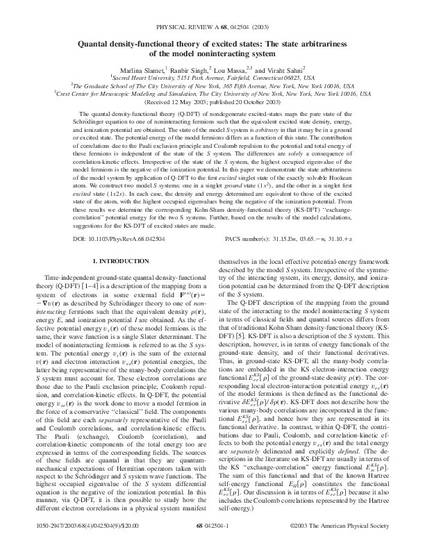
In quantal density functional theory (Q-DFT), the mapping from either a ground or excited state of the interacting system to one of noninteracting fermions with equivalent density is such that the state of the latter model S system is arbitrary. Thus, in principle, there are an infinite number of local (multiplicative) effective potential energy functions that can reproduce the density of the interacting system. In the present work, we note that there is also an arbitrariness in the wave function of the model fermions when the S system is constructed in an excited state. Different wave functions lead to the same density. As the principal requirement of the model system is met, viz. to reproduce the interacting system density, these wave functions are all equally valid representations, irrespective of whether they are eigenfunctions of various symmetry operators. However, the corresponding nonlocal properties such as the Fermi and Coulomb hole charge distributions, and the resulting Pauli and Coulomb energies, will differ. This wave function arbitrariness within Q-DFT is demonstrated via the exactly solvable Hooke's atom. Finally, Q-DFT and Kohn–Sham DFT are contrasted with regard to the state and wave function arbitrariness of the model S system.
